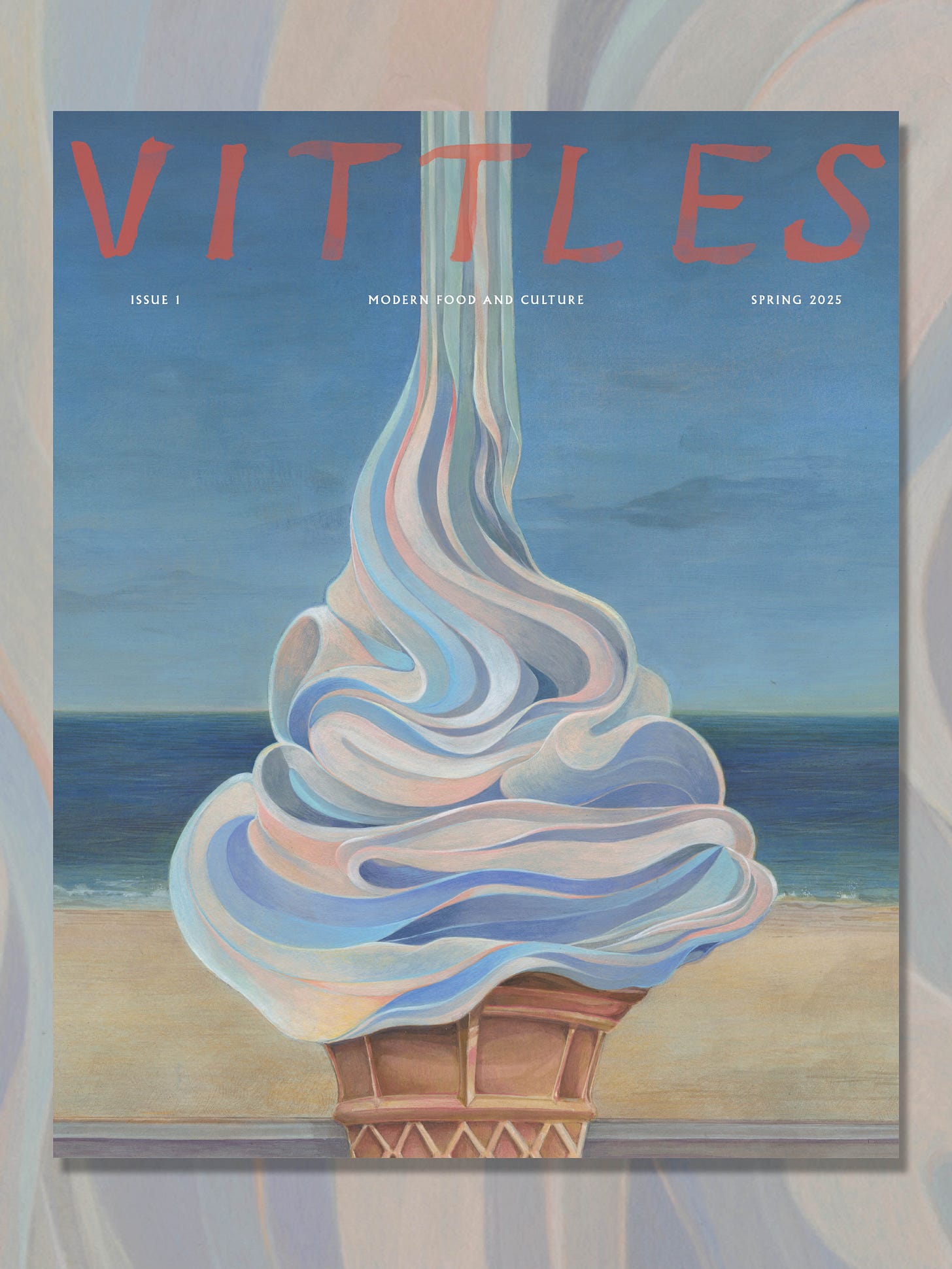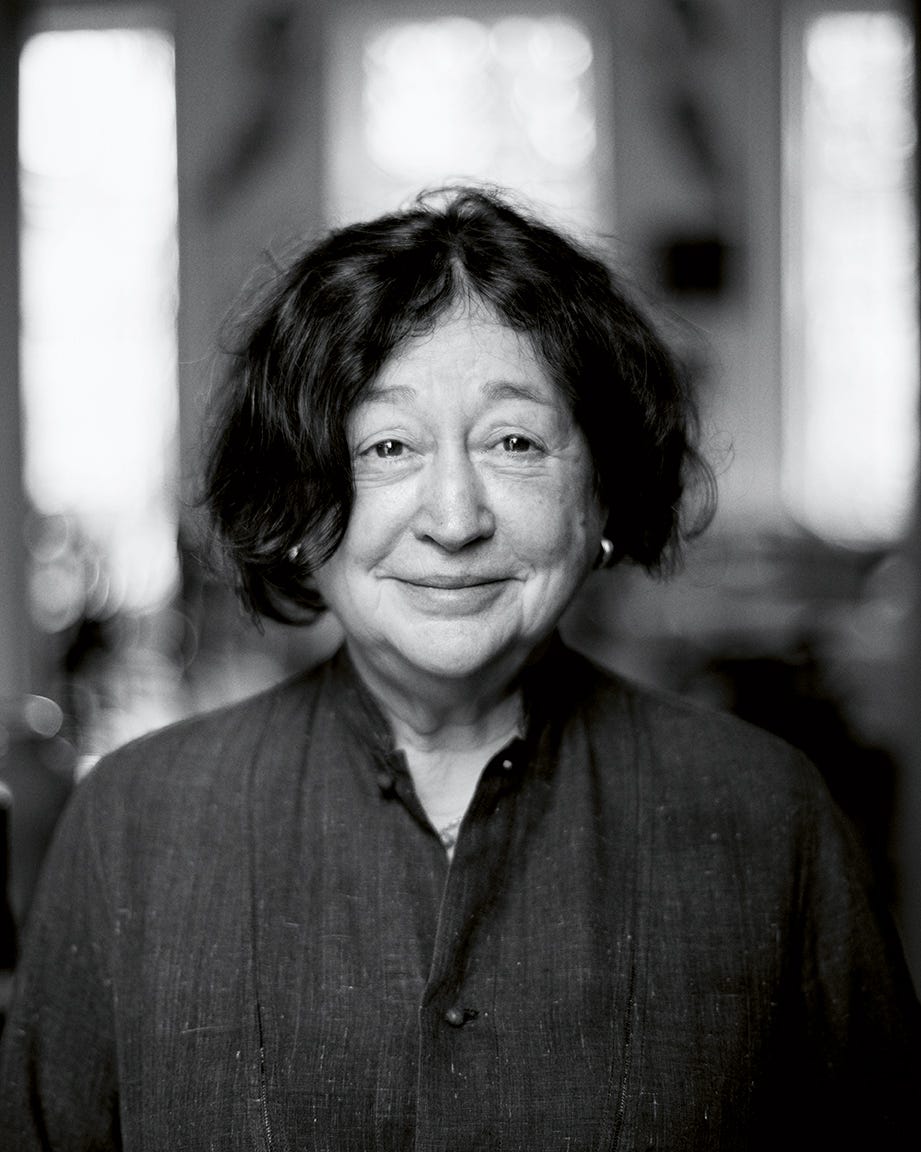Fay Maschler: 1987 and all that
Adam Coghlan talks to Fay Maschler about one of the most important years in London restaurant history.
Good morning, and welcome to Vittles Restaurants. In today’s special dispatch from Issue 1 of our magazine, Adam Coghlan interviews London’s most influential restaurant critic Fay Maschler about a seminal year in dining in the capital: 1987.
We are down to our last hundred or so copies of Issue 1 — to buy it, please visit our website.
Fay Maschler is a phenomenon. For forty-eight years, she documented the London restaurant industry as the critic for the Evening Standard, having won a competition to write a column for just three months in 1972. Soon she became, according to the Guardian, ‘the only woman who makes Michelin-starred chefs tremble.’ Her longevity and dedication to uncovering good restaurants has meant she is one of the very few British critics remaining who has wielded extraordinary influence over both their profession and the industry about which they write.
In 1987, when Fay was fifteen years into the job, the London restaurant scene changed in profound ways. Some of the most celebrated and important venues in the history of the city opened over the course of twelve remarkable months – the River Cafe, Kensington Place, Bibendum, and Harveys – all run by chefs who would later be celebrated as the progenitors of the ‘modern British’ movement. ‘The hard edges and shiny surfaces of Kensington Place … were reverberating last Monday as inveterate restaurant goers were checking out what a young British chef does these days when left to write his own card,’ she wrote in the review of Rowley Leigh’s buzzy new Kensington Place. ‘There is a movement, supported by the likes of Alastair Little…back towards stalwart food, brawny thick-set food to counteract the niminy-piminy of nouvelle cuisine’ she continued. These were restaurants that displayed a new dedication to ingredients, provenance, European regionality, designed rooms, atmosphere, service, technique and, perhaps above all, a set of principles from which the chefs would seldom deviate. All were serious (and less formal) in ways that marked them from the chefs and restaurants that came before. Even today, in gastropubs across the city, small plate restaurants, natural wine bars and places like St. John, the legacy of 1987 can still be felt.
Fay and I met this year, on a crisp, sunny January lunchtime at her home in Fitzrovia, to discuss 1987, a year which began just 35 days after I was born. Over boxes of takeaway sushi and freezer-chilled sake, we discussed the impact of those chefs, what made them different, where they came from, and what it was like to live through such a transformational era.
Adam Coghlan: We know that a lot happened, or rather a lot opened, restaurant-wise, in London in 1987: Harveys, the River Cafe, Bibendum, Kensington Place. Plus, Alastair Little was at his peak and Fergus Henderson was doing pop-ups around that time, I think. Looking back now, what do you remember about that year?
Fay Maschler: I don’t suppose it seemed as phenomenal as it does in retrospect, although in terms of the restaurants that opened it was extraordinary. Marco1 was an extraordinary talent and I’d never eaten food cooked by an English chef that was as good as that. He quickly became known for his temper, and there was a tension to eating there which I quite enjoyed. He never threw me out or anything, but he did say at a later date that I wouldn’t give him five stars because he refused to sleep with me. Which is a slur, but the more you try to get out of that, the deeper you dig yourself in.
But equally exciting was Kensington Place, because it had that floor-to-ceiling frontage of glass; you could watch everybody eating and they could watch you. It was also deliberately hard-edged – I remember, after a few years, Rowley2 presented me with a cushion to sit on because the chairs were uncomfortable. Rowley’s cooking was excellent and the dish that goes on being famous to this day, was the Parmesan custard with anchovy toast. It was up the road from the Evening Standard’s office, and in those days we were allowed to go and hang out in restaurants – people would go for lunch and never come back.
And then the River Café. As everyone now knows, it started out as a canteen for Ruthie[’s]3 husband’s4 architectural practice. But I knew her then: she was a neighbour in Belsize Park when I lived there; I would go down there with Alan Crompton-Batt5 often to try and help them because they hadn’t a clue – neither Rose6 nor Ruthie – about the mechanics of running a restaurant. I remember one day they ran out of, I think, sea bass, and Rose said, ‘I’ll ring Harrods and get some delivered.’ I said, ‘I think you’ll find that isn’t a way to run a restaurant business.’ They were keen and they were sweet and they were lovely, but not living on the same planet as the average restaurant owner.
“[Marco Pierre White] never threw me out or anything, but he did say at a later date that I wouldn’t give him five stars because he refused to sleep with me. Which is a slur, but the more you try to get out of that, the deeper you dig yourself in.”
And Bibendum! Simon7 is probably the best cook I know. I wouldn’t necessarily say the best chef, but the best cook – his food is perfect, and he’s obsessive. I’ve eaten quite often in his flat. Once, he invited Albert Finney8, who was my schoolgirl crush. When I was at school, I went to see Saturday Night and Sunday Morning and fell in love with him. In those days, you thought if you fell in love with somebody, you’d probably marry them, so I would practice writing ‘Yours Fay Finney’ in my rough book at school in order to put that at the end of my letters. Albert was a great drinker and I’d taken … I think it was bigger than a magnum, what’s next … a jeroboam of red wine, which I’d got from Bill Baker9. And we managed to get through the whole thing. Albert said from time to time, ‘Pass Albert’s teapot.’ And then he kissed me.
Adam: Wow. What a moment.
Fay: It was a good kiss.




